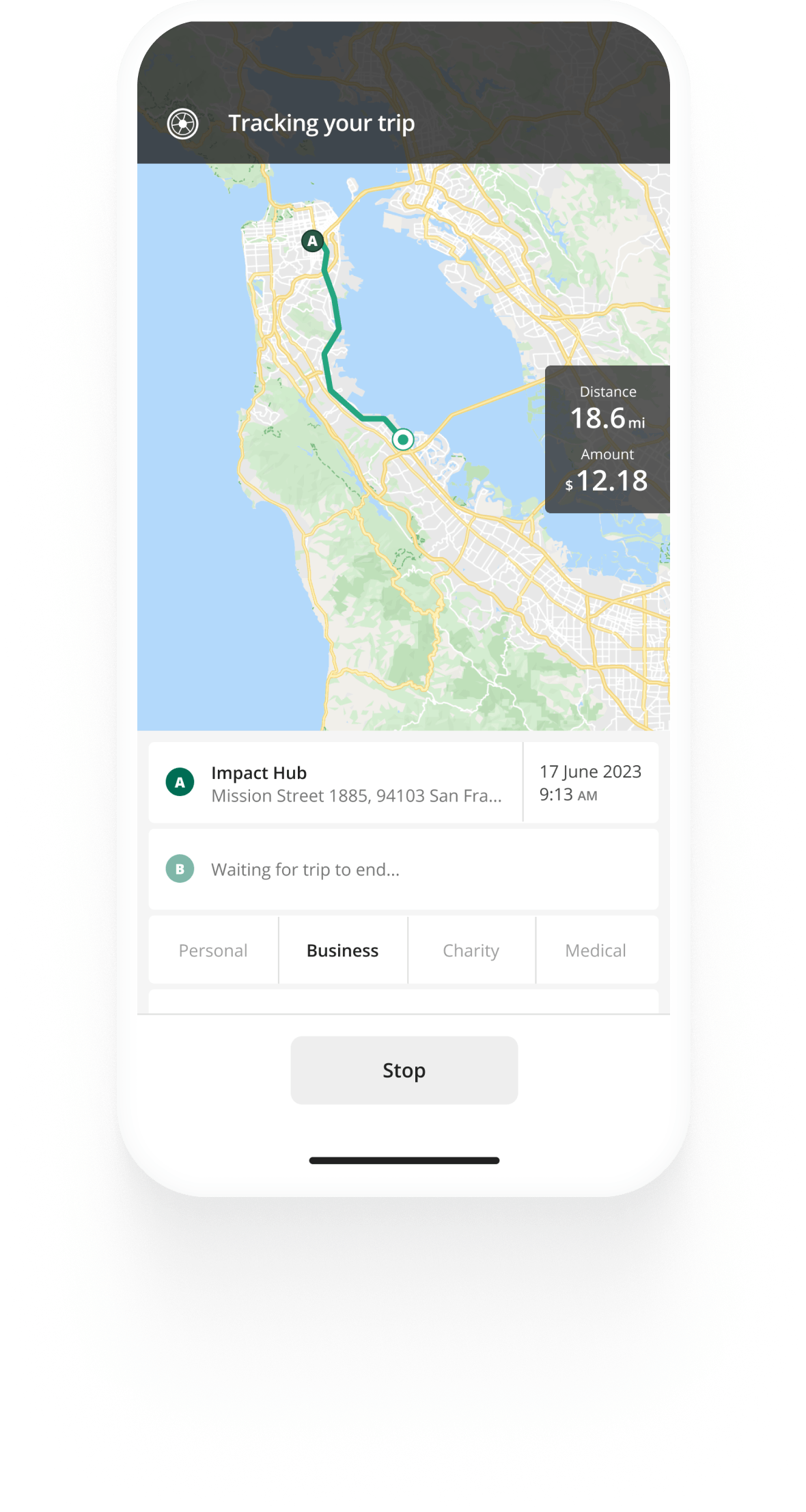Track mileage automatically
Get started
How to Charge Customers for Mileage
If you own a small business and often travel considerable distances to provide your services, it's completely normal to charge your clients for business travel time, namely business mileage.
Below you’ll find information on what methods you can use to charge mileage to customers, and factors to consider when deciding on your rate.
Is it worth charging mileage to customers?
Providing your services to an area larger than your home area can bring you more jobs, customers, and profit—but it can also increase your vehicle expenses.
To make your business more profitable, you should consider adding a mileage fee to your overall pricing. How you go about it will depend on your industry, but clients should generally be used to extra charges, as long as they know about them upfront.


Mileage tracking made easy
Trusted by millions of drivers
Automate your logbook Automate your logbook

Automatic mileage tracking and IRS-compliant reporting.
Get started for free Get started for freeDifferent methods for charging a mileage fee
When deciding how to charge mileage to customers, you have several options: you can bundle the charge with your service, ask for a flat rate for distance ranges, charge per mile or per hour of driving, or use a hybrid system of a flat and variable rate.
Here’s what you should consider when opting for a charging system for your mileage expenses.
Flat distance rate
If you choose to charge a flat rate for the distance you travel, you can consider a tiered system where the first 20 or so miles are free, then charge a higher sum for ranges of every 20, 25, or 30 miles.
Per mile rate
If you charge your customers per mile, you might again consider providing a few free miles and then asking them to reimburse each mile you’ve driven to and from the more remote job sites. Choosing a rate will again depend heavily on your industry and vehicle expenses.
Remember to track your miles so you can charge your customers fairly, and have proof at hand if they question the charges. A mileage tracking app can do the job for you automatically, and categorize the different clients or “workplaces” you often drive to.
Hourly rate
Simply charging per mile might not be the best option, if you live in a more congested area with frequent traffic.
A 10-mile trip in the city might take you double the time of a 20-mile trip in rural areas.
In this case, consider charging an hourly rate. You can break up the hour into four 15-minute sections and charge accordingly. So, if you drove for an hour and 15 minutes, you will charge your customer the 15-minute rate 5 times for the time you spent driving to and from their location.
The hybrid approach
If you struggle to choose the right method, you can consider charging a flat rate, either per mile or distance; when stuck in traffic, you can apply additional charges for time spent in the car.
This method is a bit more complicated, but it can help you better cover your expenses for transport to and from your customers. Make sure your clients have a good understanding of how you calculate this.
How much to charge for mileage
You can figure out how much to charge your clients based on the following criteria:
- The industry you operate in
- The type of service you provide
- The area you live in
- Who your customers are
- Your vehicle expenses
Car expenses are particularly important to consider. Naturally, driving a big vehicle, heavy with tools or equipment, will cost you more per mile than if you drive a regular sedan. Take a look at your gas consumption as well; whether your car is a gas-guzzler or a low-cost hybrid will also help you determine a fair fee.
Charging mileage to customers at the IRS rate
Choosing to charge mileage at the IRS standard rate will likely go down well with customers as the rate isn’t high. However, keep in mind that it may not cover all your vehicle expenses, if your car is expensive to maintain.
The IRS has announced the 2025 IRS mileage rate, which stands at 70 cents per business mile.
Note: Regardless of how much you decide to charge customers per mile, the charge is a taxable part of your income.
Deducting car expenses at tax time
At tax time, you will be able to deduct all business-related car expenses by either the standard mileage rate or by the actual expenses method.
Remember to track all mileage associated with your business to stay compliant with the IRS and claim the highest possible deduction.
Find more about mileage deduction rules for the self-employed.

Tired of logging mileage by hand?
Effortless. IRS-compliant. Liberating.
Top posts
Related posts
IRS Mileage Guide
Latest update: April 24, 2025 - 10 min read
Mileage reimbursement in the US — rates and rules for employees, self-employed and employers in the US.
IRS Mileage
Latest update: December 23, 2024 - 2 min read
Find out what IRS mileage is and how you can claim it. See how much you can claim per mile from the IRS for your business-related driving.
DoorDash Background Check
Latest update: January 29, 2025 - 2 min read
Here’s what to expect when DoorDash conducts background checks, how Checkr works, and why it may take longer to get approved.

